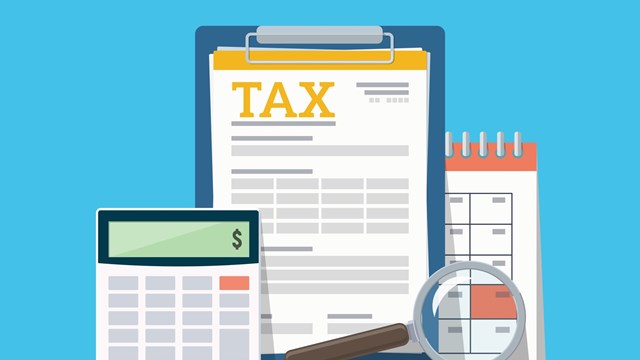Despite some admissions of error from the city, and a temporary cap on increases in assessed valuations, co-op officers and elected officials from Eastern Queens who in recent weeks have declared a “tax revolt” aren’t backing down.
Many of you may have read the recent article in The Cooperatorabout this controversy in which a locally-based organization known as the Presidents Co-op Council and its supporters protested skyrocketing increases in assessed valuations that they claimed were unfair.
While most of these increases were less than 10 percent in past years, this year, some of these co-ops received increases of 86 percent, 122 percent, even 147 percent. This meant bad news for residents, since property taxes are based on these assessments, and many of these cooperators are seniors and others living on fixed incomes. Were property taxes to go up, these costs would have to be passed on to the shareholders in the form of steep increases in their monthly maintenance fees.
Cap Imposed
After two months of meetings, hearings and more agitation that stretched from Glen Oaks to Flushing to Whitestone and from Bayside to Fresh Meadows, the city’s Finance Department first declared that it would cap property-tax increases for all city co-ops at 50 percent for this year only. But after a heated City Council hearing on May 2, where Commissioner David Frankel testified before council members, he conceded that mistakes were made and that overall tax increases should be in the neighborhood of around 10 percent. The City Council announced that they have reached an agreement with the mayor’s administration to cap increases in market values of all co-ops and condos at 10 percent for the next two years, according to Councilman Mark Weprin, D-Queens.
Attorneys Mark Hankin and Geoff Mazel of the law firm of Hankin & Mazel, PLLC have been hired to represent the President’s Council on behalf of the beleaguered Queens co-ops. Speaking informally to this writer at the recent Cooperator Expo, Hankin said that the board presidents and the legal team have spoken to the City Council members, asking them to try to get the Finance Department to lower the assessment increases. At the May 2 public hearing, Commissioner Frankel was grilled by council members seeking answers to the inflated valuations.
An article in the New York Postin April revealed that “the city’s Finance Department made a monumental blunder” in the assessment process, an error that “left the department scrambling to reduce the values of the 139 affected co-ops—mostly in Queens—by more than $300 million.”
The Post article explained that the source of the error is a new computer program that is supposed to search for nearby “comparable” rental units on which to base the co-ops’ values. However, according to the Post, the program instead searched for nearby commercial properties, whose “rents can be double or triple a residential rental building.”
Owen Stone, a spokesman for the city’s Finance Department, admitted that there was “a glitch with some bad data,” but insisted that it affected “very few properties.” Speaking about Glen Oaks, one of the most publicized co-op complexes that was affected, he said that not all of the buildings with the development were affected by the computer problem.
“We’ve been doing a property-by-property review,” Stone told The Cooperator. “We’ve made changes based on what we believe might work as better comparables—similar buildings from the same neighborhoods.” He added that the problem was “not an across-the-board thing.”
“I definitely think we experienced some growing pains,” Stone added. “We implemented a new methodology this year, a new computer-assisted mass appraisal system. We’ve been reviewing it and have been making changes where appropriate.”
At the same time, two sympathetic state legislators from the area—State Sen. Toby Ann Stavisky and Assemblyman Ed Braunstein—introduced legislation in Albany that would remove co-ops and condos from Class 2 properties, which includes rental buildings, and would place them in Class 1 with one-, two- and three-family houses. Class 1 properties are limited to six percent yearly increases in assessed valuation.
But Bob Friedrich, who is president of the 2,904-unit Glen Oaks Village as well as founder of the Presidents Co-op Council, says he isn’t buying it.
“We’re absolutely not satisfied,” says Friedrich. “This is an outrage. This system is going to create enormous hardship to these communities.” Friedrich continued, “Only in New York City can they raise your assessment in the middle of the worst real estate decline in a generation, and we’re supposed to be happy about this?”
Michael Kurtz, president of the 1,788-unit Clearview Gardens co-op, said, “Is there a computer glitch? You bet, but they can’t convince anyone that they made any effort to verify the properties or the classifications within their own system.”
Some Background
The co-ops in Eastern Queens, received their assessed valuations in January as usual, and many board officers were shocked at the increases. Among the worst hit were Cryder Point and LeHavre, both in Whitestone, with 147 percent and 122 percent single-year increases, respectively. As for Glen Oaks Village, the city’s largest garden-apartment complex, it would have to pay an 86 percent increase.
Contrasted with these figures, “Queens overall had an average valuation of about a 33 percent increase, and the city had an average of a seven percent increase,” Warren Schreiber, president of Bay Terrace Cooperative Section 1 in Bayside, said in March.
Soon, co-op presidents and board members started calling each other and found that they weren’t really alone. In addition to the above-mentioned co-ops, Georgetown Mews, Fresh Meadows and Mitchell-Linden were just some of the other developments that were affected.
They started to hold meetings, and local elected officials began to support their cause. “Every town hall meeting we held was standing-room-only,” says Friedrich. For example, one Town Hall in early March at P.S. 193 in Whitestone attracted an estimated 400 to 500 people, also SRO, despite stormy weather outside.
The system of classifying co-ops and condos together with rental properties is part of New York state law, dating back to 1981. The setting of values for co-ops that were built prior to 1974 by using comparisons with similar rental properties (also called “comps”) is also related to this statute, known as Law 7000-A of 1981.
Part of the outrage seen in the wake of these huge increases is related to the fact that most of these co-op developments are at least 35 years old, with many of them a good deal older. Glen Oaks Village goes back to 1947. Many of these developments were converted from rental apartments, and some still have rental tenants. Of the residents, a large percentage are seniors who have been living there for decades. Some families have several generations in the same development.
If they are forced to pay increased maintenance based on large increases in valuation, says Kurtz, “Shareholders would be forced to curtail eating at restaurants. Many items purchased at local stores would be eliminated as efforts would be made to conserve what little spending money they have.”
After the initial shock of discovering these large increases, representatives of the Presidents Co-op Council met with representatives of the Finance Department. “Initially,” says Kurtz, “the commissioner [David Frankel] defended the assessments, saying the co-ops and condos were undervalued in prior years and this new assessment just made up for that. He also said the department reverted to an old method that had been used because he felt it more accurately reflected a true value.
“When asked why these under-valuations weren’t citywide and seemed to be limited to Northeastern Queens, he had no answer,” Kurtz remarked.
At any rate, time is running out. The next property taxes, based on the new assessed valuations, have to be paid starting July 1. The co-op shareholders would then almost certainly have to pay increased maintenance charges.
What’s Next?
What would the co-op presidents and their supporters like to see happen?
Friedrich says that the first thing they want is for the Finance Department to do a re-evaluation of properties after a “full and thorough independent investigation.” Kurtz would like to see an independent audit, done every year, of the figures used for calculating new values. City Comptroller John Liu responded to the controversy on May 9 calling for an audit of the entire property tax rolls.
They also support the aforementioned bill, co-sponsored by Stavisky and Braunstein, that would put co-ops and condos into Class 1 for tax purposes. Stavisky told The Cooperator that she and Braunstein are still going ahead with the bill and that it is necessary, explaining that “co-ops and condos belong with one, two and three-family houses, not with rental apartments.”
Like many of her constituents, Stavisky, herself a resident of Cryder Point, also said the Finance Department should take a closer look at the assessments it’s already done. In an earlier interview with the Cooperator in March, said she believed that the situation is another example of the city—in this case the Department of Finance—trying to produce more revenue in a year when the city has a tight budget—an idea that Friedrich agrees with.
If the situation isn’t resolved to the cooperators’ satisfaction, the law firm stands ready to file a lawsuit, said Hankin. One immediate goal is to get a temporary restraining order to prevent the Finance Department from imposing the tax increases.
In the meantime, the New York City Council has convinced the DOF to extend a cap on market-value and assessment increases from one year to two years until 2013. This cap will give lawmakers in Albany time to present and, hopefully pass the proposed legislation.
No matter what happens, it appears that the situation has given rise to a rebellious spirit among the cooperators of Eastern Queens and their supporters in the City Council and state legislature that can in some respects be compared to the revolutionary mood among the union members, teachers and civil servants in Wisconsin. And it doesn’t show any signs of slowing down soon.
Raanan Geberer is a freelance writer and reporter living in New York City.







2 Comments
Leave a Comment